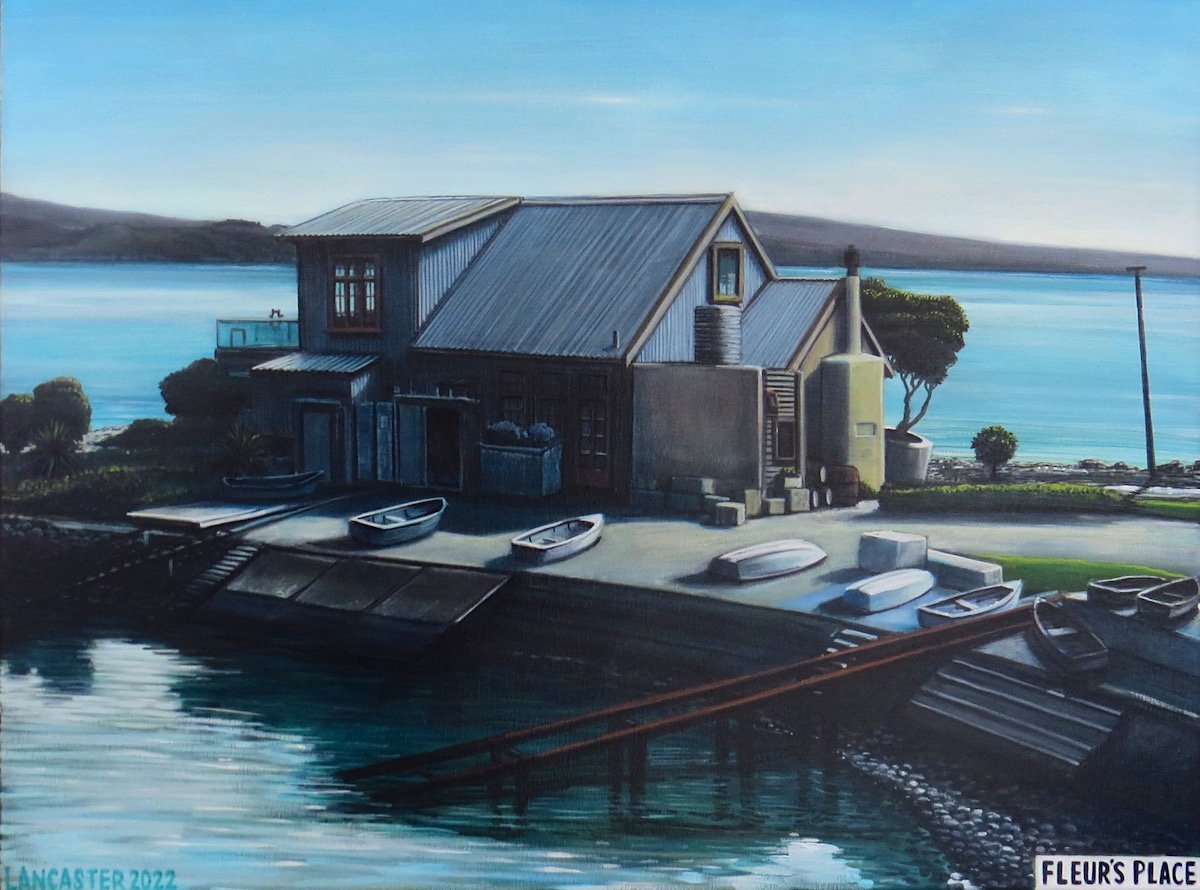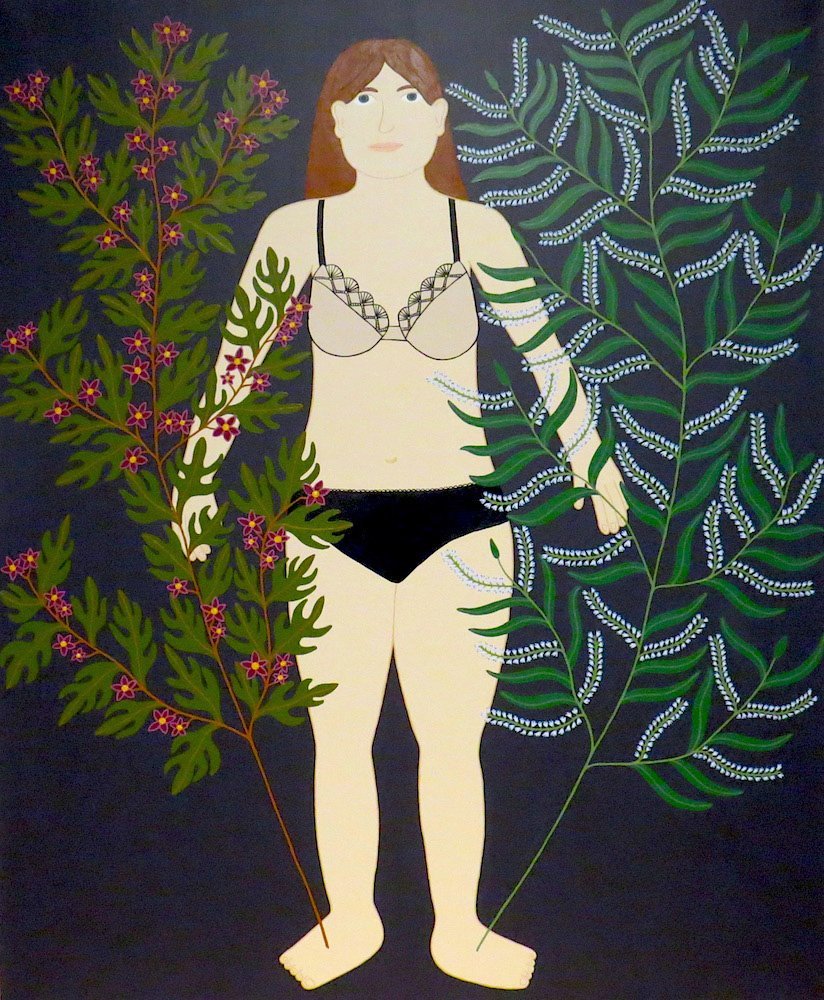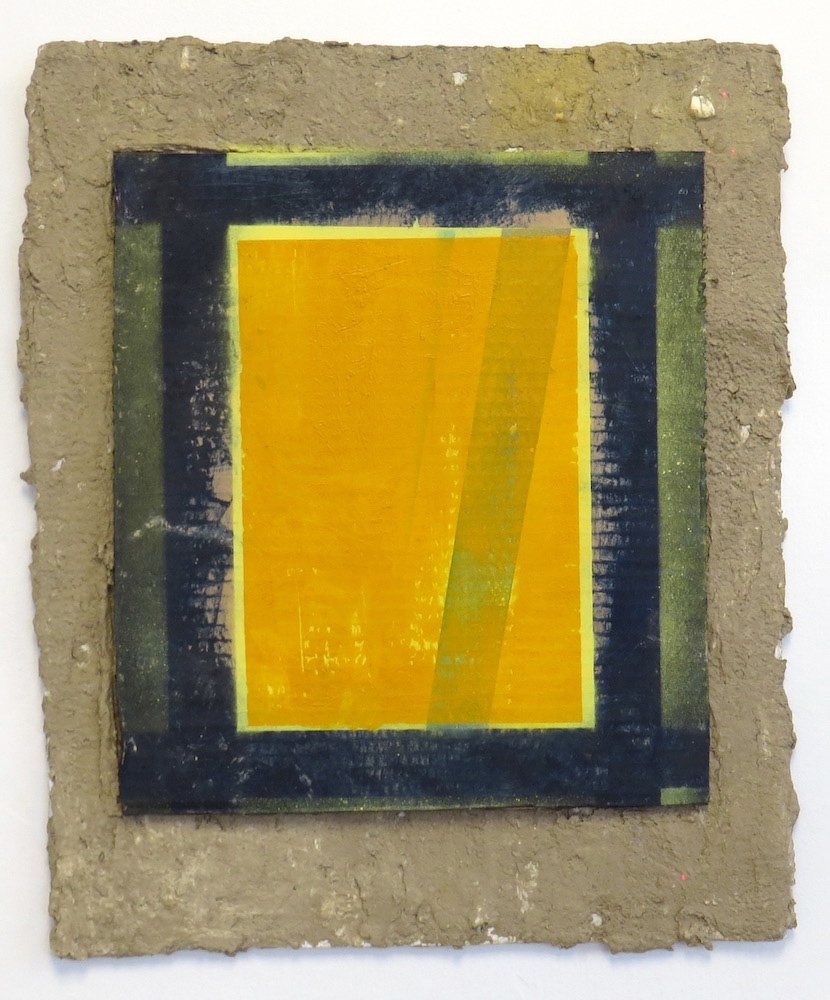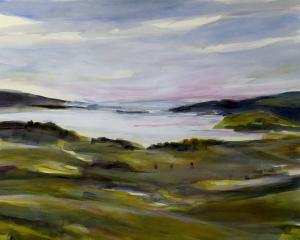
(The Artist’s Room)
Josh Lancaster presents a series of "Postcards from Down South", a small series of eight works at the Artist’s Room.
These acrylic paintings present snapshot-like views, as if from someone’s holiday travels in Otago and Southland. We see the destinations, the highlights of the trip, and also a few of the more ephemeral views along the journey of the unknown traveller, The overall effect of the exhibition is like leafing through an album of holiday photos. Lancaster has taken the views and presented them as the Kiwi idyll, scenes that evoke the memories of childhood journeys to places unknown that are still essentially and unequivocally New Zealand.
Though an Auckland artist, Lancaster has focused his attention squarely on the southern South Island, and largely on the landmarks and sights which may seem unfamiliar for someone travelling to the far end of the country from their normal home. Picture postcard scenes of The Nuggets and Taiaroa Head nestle comfortably against Fleur’s harbourside dwelling and an old Te Anau shed. Milford Sound and Lake Hayes sit companionably alongside an image of Jimmy’s Pie Shop.
This juxtaposition of the grand and the prosaic adds considerable warmth to the exhibition, and the paintings have captured the changeable light and gentle mistiness of the southern mountains and seas nicely.

(Dunedin Public Art Gallery)
"Memories of a Naturalist" brings together the works of six artists separated by time, turning them into a satisfying whole.
The oldest works displayed are by illustrator and painter Kate Mary Ogston and naturalist George Malcolm Thomson. Both worked at a time when New Zealand’s flora and fauna were not fully known and European species were being introduced by acclimatisation societies. Ogston’s flowers have the calm meticulousness of botanical studies, echoed in the scientific illustrations and writings from Thomson’s unfinished catalogue of crustacea.
Lucy Meyle’s recent installation deconstructs the idea of the naturalist’s analytical work, presenting a grid overlaid with an array of traces and artefacts such as pewter worms, casts of dog prints, and wooden ramps. The presented evidence is of introduced species replacing the native organisms. Alongside this display Keri Whaitiri’s sparse construction of native and introduced materials references the transition from indigenous to colonised, both in nature and in people.
Nova Paul’s hand-processed film, Rakau, plays nearby — a work about and made from trees, the film was hand-processed using developer created with puriri leaves. The exhibition is completed by a Mother Earth-like portrait by Ayesha Green, plants growing from the woman’s feet representing the land’s connection to us all, and especially to the aptly named tangata whenua.

(Wave Project Space)
Looking at finished masterpieces, it’s often a shock to remember that the painting process is a messy one, and that artists’ studios are often filled with offcuts, paint splatters, drop-cloths, and wood shavings. The artist’s life isn’t all one of sudden epiphanies and glorious visions; it is often one of juggling paperwork, crippling creative block, and fighting for recognition.
In her exhibition at Wave, Linda Cook turns the equation on its head, creating work from the detritus. There’s a quotidian feel to the old cardboard offcuts, hand-mixed plasters and paints, and odd scraps which together form her vividly coloured constructions. Bright oranges and unnerving avocado greens jostle alongside mottled pink in these creations. The works are literally rough around the edges, often contorting to wrap around the corners of the gallery space. The pieces are unruly, eccentric and ultimately joyful.
Though exuberant, the abstraction of the works leaves many of the pieces with a mysterious side, only enhanced by the titles, all taken from quotations from writers such as Janet Frame. These titles provide an often lateral or unexpected starting point from which to view the works, and from which to try to garner a glimpse of understanding of them.
By James Dignan












